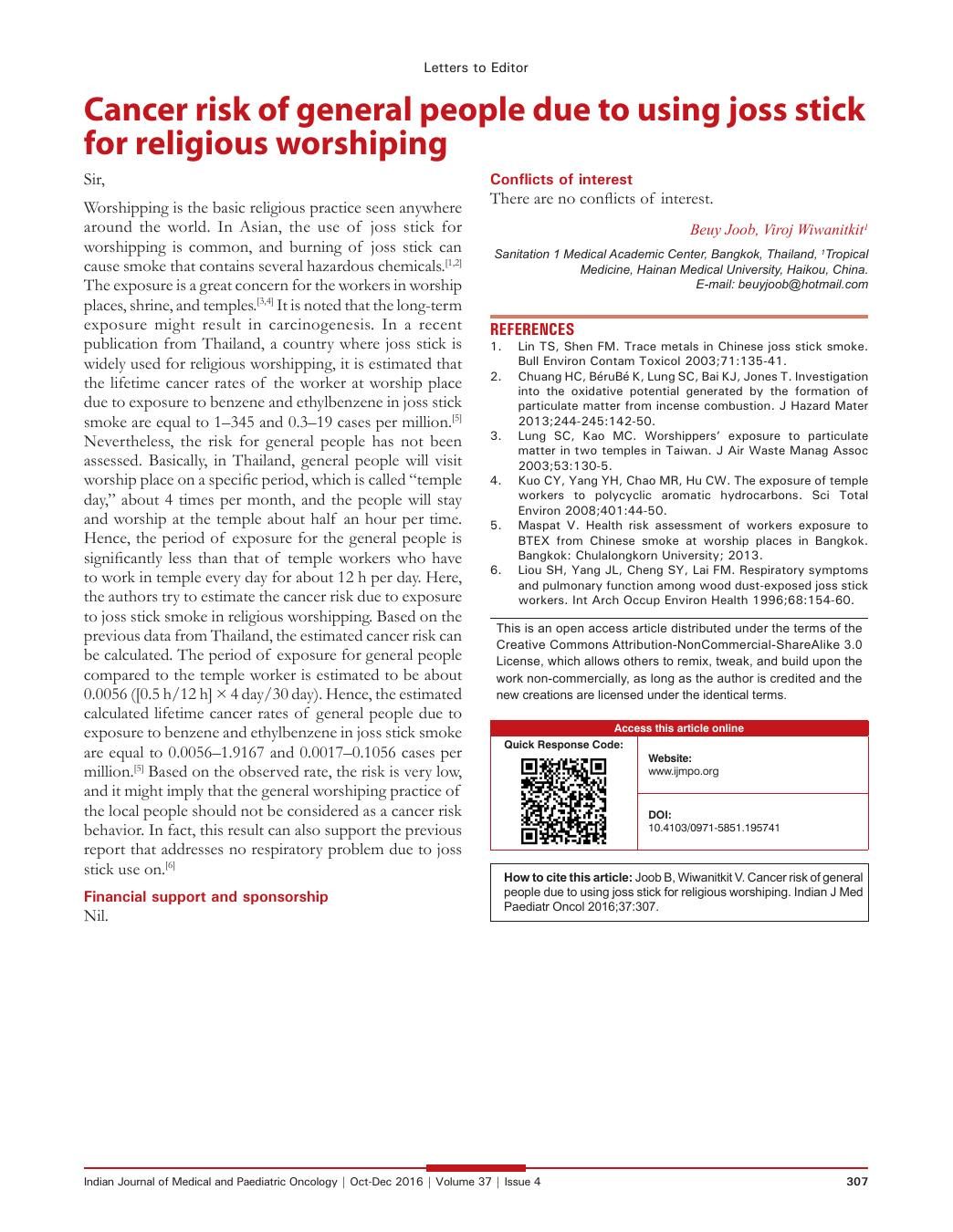Cancer risk of general people due to using joss stick for religious worshiping
CC BY-NC-ND 4.0 · Indian J Med Paediatr Oncol 2016; 37(04): 307
DOI: DOI: 10.4103/0971-5851.195741

Publication History
Article published online:
12 July 2021
© 2016. Indian Society of Medical and Paediatric Oncology. This is an open access article published by Thieme under the terms of the Creative Commons Attribution-NonDerivative-NonCommercial-License, permitting copying and reproduction so long as the original work is given appropriate credit. Contents may not be used for commercial purposes, or adapted, remixed, transformed or built upon. (https://creativecommons.org/licenses/by-nc-nd/4.0/.)
Thieme Medical and Scientific Publishers Pvt. Ltd.
A-12, 2nd Floor, Sector 2, Noida-201301 UP, India
Sir,
Worshipping is the basic religious practice seen anywhere around the world. In Asian, the use of joss stick for worshipping is common, and burning of joss stick can cause smoke that contains several hazardous chemicals.[1,2] The exposure is a great concern for the workers in worship places, shrine, and temples.[3,4] It is noted that the long-term exposure might result in carcinogenesis. In a recent publication from Thailand, a country where joss stick is widely used for religious worshipping, it is estimated that the lifetime cancer rates of the worker at worship place due to exposure to benzene and ethylbenzene in joss stick smoke are equal to 1–345 and 0.3–19 cases per million.[5] Nevertheless, the risk for general people has not been assessed. Basically, in Thailand, general people will visit worship place on a specific period, which is called “temple day,” about 4 times per month, and the people will stay and worship at the temple about half an hour per time. Hence, the period of exposure for the general people is significantly less than that of temple workers who have to work in temple every day for about 12 h per day. Here, the authors try to estimate the cancer risk due to exposure to joss stick smoke in religious worshipping. Based on the previous data from Thailand, the estimated cancer risk can be calculated. The period of exposure for general people compared to the temple worker is estimated to be about 0.0056 ([0.5 h/12 h] × 4 day/30 day). Hence, the estimated calculated lifetime cancer rates of general people due to exposure to benzene and ethylbenzene in joss stick smoke are equal to 0.0056–1.9167 and 0.0017–0.1056 cases per million.[5] Based on the observed rate, the risk is very low, and it might imply that the general worshiping practice of the local people should not be considered as a cancer risk behavior. In fact, this result can also support the previous report that addresses no respiratory problem due to joss stick use on.[6]
Financial support and sponsorshipNil.
Conflicts of interest
There are no conflicts of interest.


 PDF
PDF  Views
Views  Share
Share

